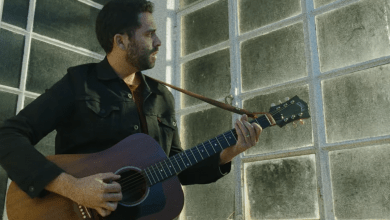Lisbon hosts the exhibition “Rapture” by AI Weiwei at Cordoaria Nacional
During the exhibition, there will be a cycle of documentaries about Ai Weiwei's life and work.
Ai Weiwei, the contemporary artist and Chinese activist, comes to Portugal for the first time with an unprecedented exhibition: Rapture, to be held at Cordoaria Nacional from June 4, 2021.
[dropcap]E[/dropcap]lected the most popular artist in the world in 2020 by The Art Newspaper, Ai Weiwei is recognized worldwide for his strong political engagement and for connecting art to social and human rights issues. Curated by the Brazilian Marcello Dantas, the exhibition will present some of the artist’s most iconic works, as well as original works produced in Portugal that explore revisited traditional techniques.
For Ai Weiwei, Rapture is a little bit of all these ideas taking shape in an unprecedented exhibition that proposes to present the two creative dimensions of an iconic artist of our times: reality and fantasy.
If, on the one hand, Ai Weiwei is a notorious political activist, a symbol of resistance to oppression and a defender of civil rights and freedom of expression, with a wide artistic production that has marked the struggle in recent decades; on the other, he is also an articulator of humanity’s deepest cultural roots, especially of Chinese traditions and iconography, lost or forgotten since the Cultural Revolution of Mao Zedong (1966 – 1976). This more fantastic, mystical and spiritual dimension is a strong element, but less noticeable in his work.
The search for materials, techniques, and symbolic elements from other times is a work of cultural archeology that is part of the search for the identity that China lost and currently suffers from disconnection with its roots.
The exhibition is divided into two cores/flanks: one is the fantasy side, where this origin is explored; and the other focuses on the reality and the emergence of issues that overflow in our lives with the worsening of human conditions on the planet. Whether for political, environmental, or social reasons, Ai Weiwei offers us an insight into the essential issues that afflict all peoples, such as where we come from and what we are doing here.
Some of the historical works that will be on display are Snake Ceiling (2009), a large snake-shaped installation made up of hundreds of children’s backpacks, in memory of the students killed in the 2008 Sichuan earthquake; Circle of Animals (2010), in which the artist revisits a series of sculptures made up of twelve animal heads from the Chinese zodiac that adorned a fountain in the Yuanming Yuan garden, outside Beijing, during the Qing dynasty; and Law of the Journey (Prototype C) (2016), which consists of a 16-meter long inflatable boat with human figures and alludes to one of the most recurring themes in the artist’s work: the global refugee crisis.







